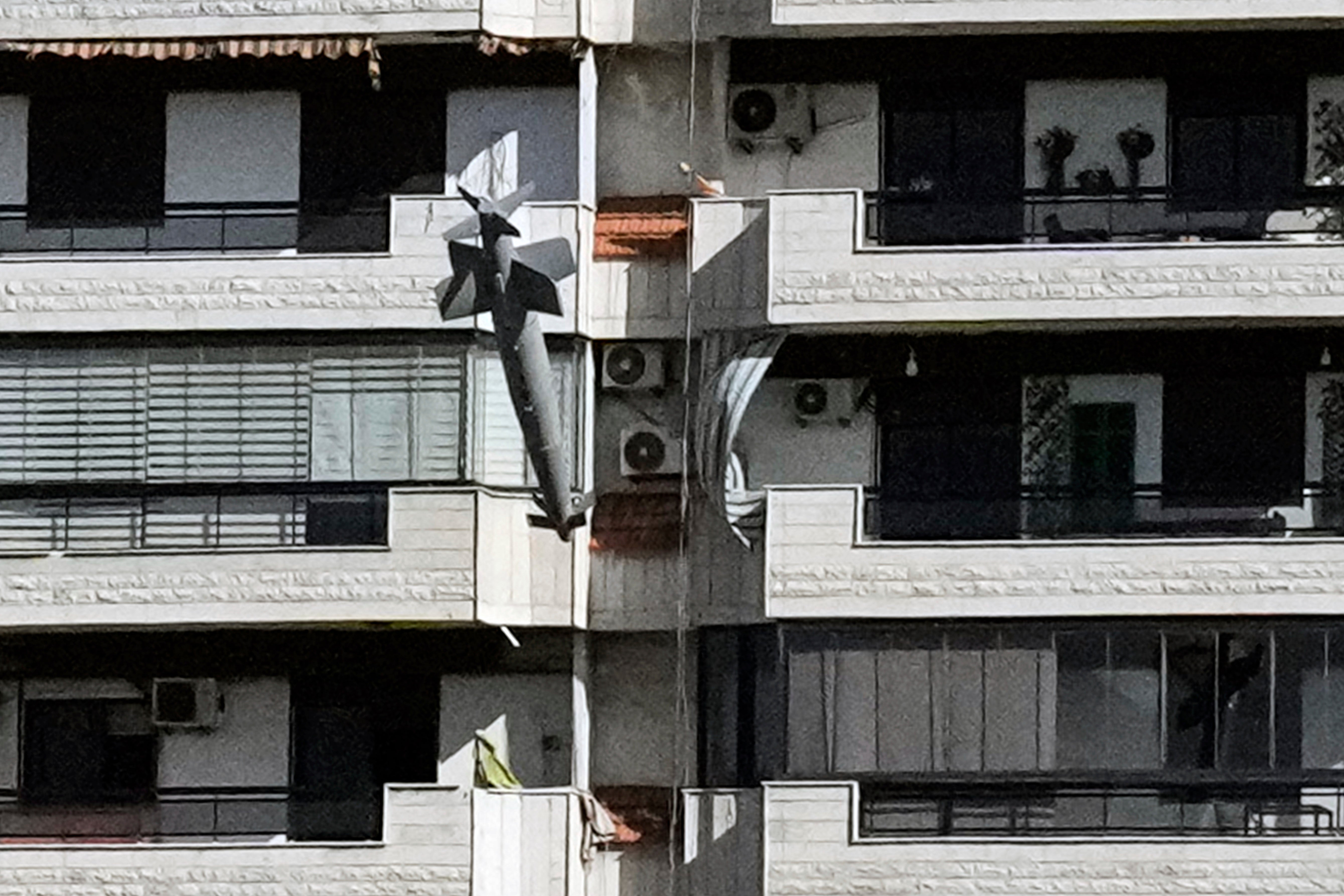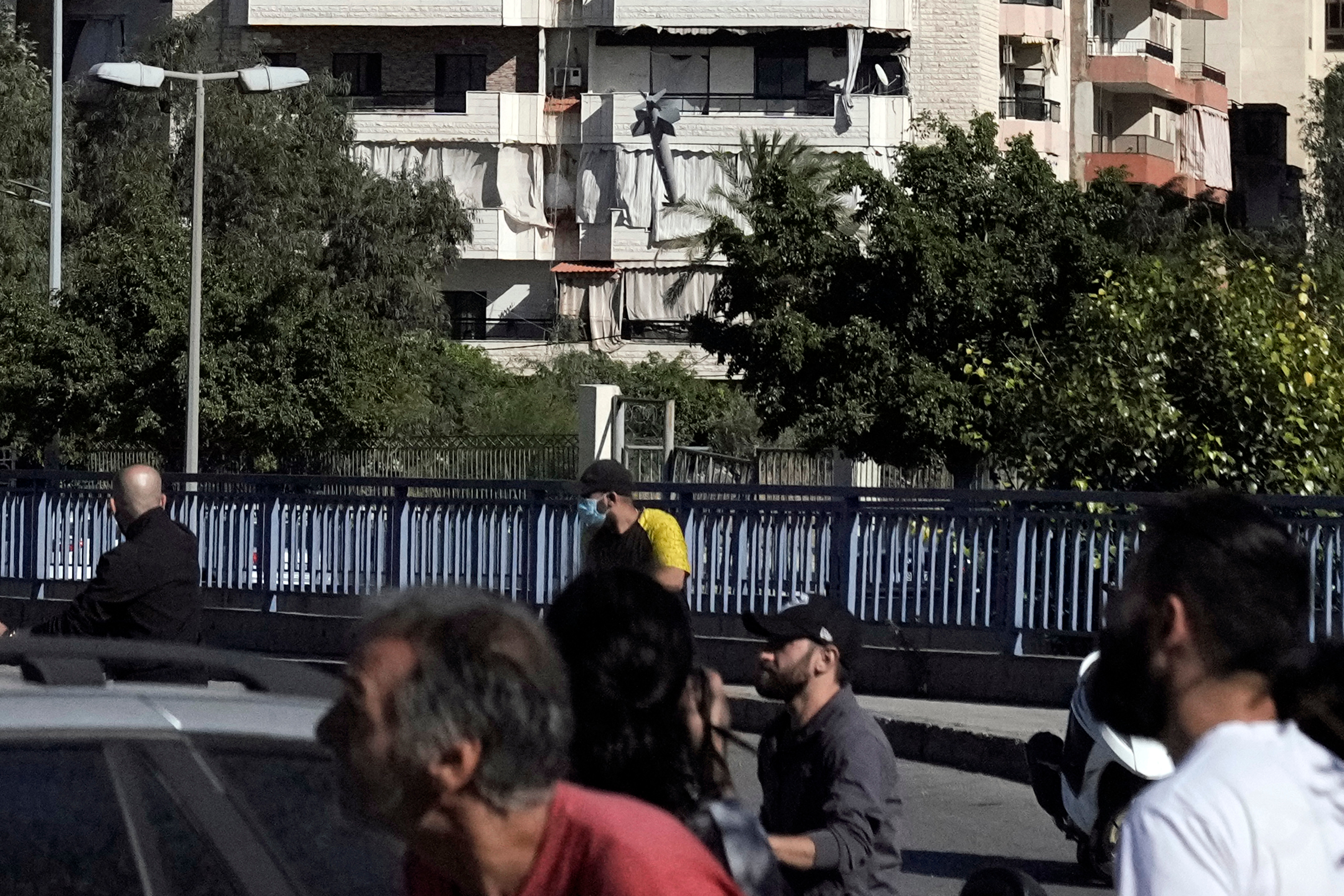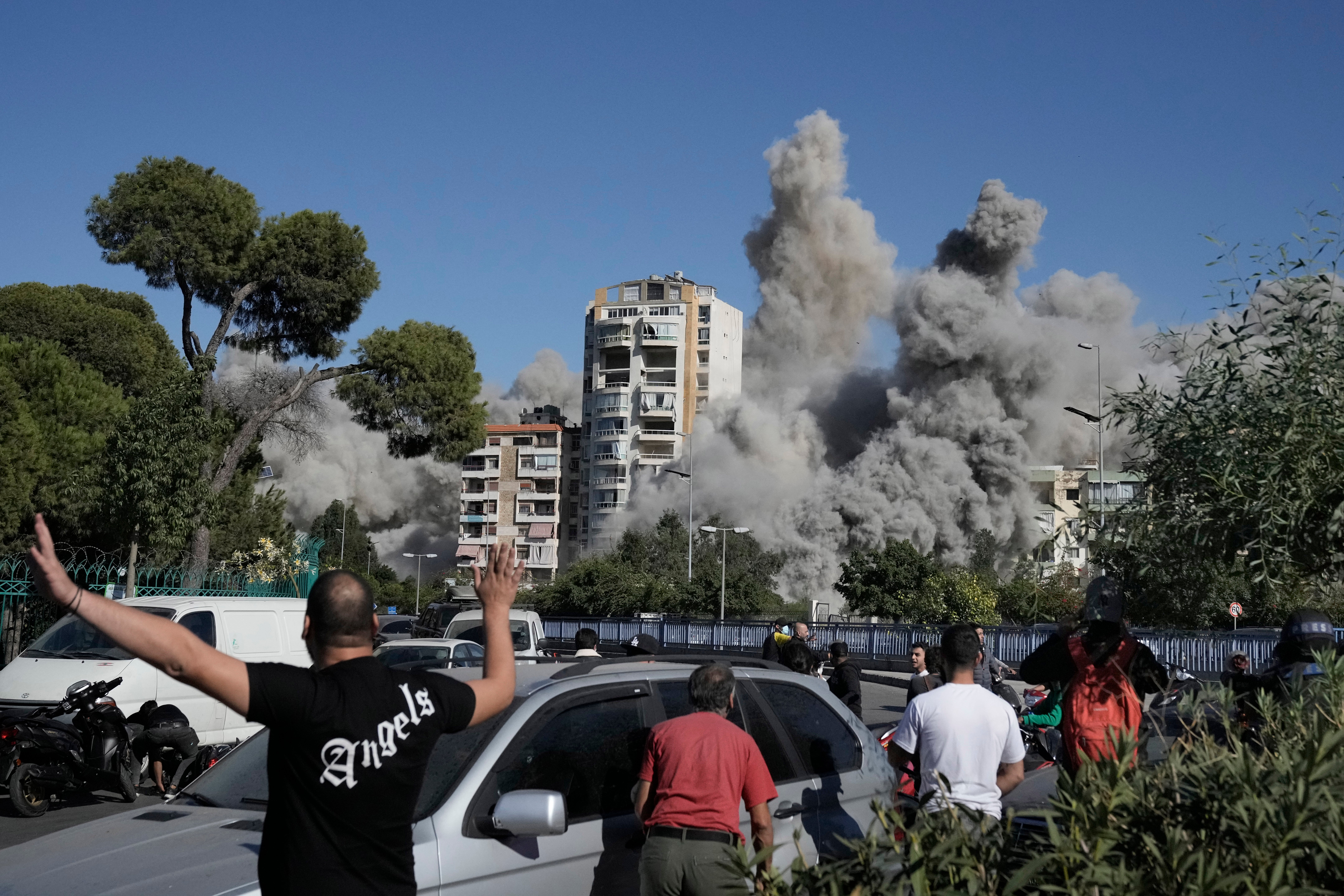Israeli weapon captured in rare photos of Beirut airstrike appears to be powerful smart bomb
Minutes before the strike brought down the building, there were two smaller strikes, in what Israel’s military often refers to as a ‘a knock on the roof’

Your support helps us to tell the story
From reproductive rights to climate change to Big Tech, The Independent is on the ground when the story is developing. Whether it's investigating the financials of Elon Musk's pro-Trump PAC or producing our latest documentary, 'The A Word', which shines a light on the American women fighting for reproductive rights, we know how important it is to parse out the facts from the messaging.
At such a critical moment in US history, we need reporters on the ground. Your donation allows us to keep sending journalists to speak to both sides of the story.
The Independent is trusted by Americans across the entire political spectrum. And unlike many other quality news outlets, we choose not to lock Americans out of our reporting and analysis with paywalls. We believe quality journalism should be available to everyone, paid for by those who can afford it.
Your support makes all the difference.A photographer has captured the moments an Israeli bomb plummeted toward a Beirut building before detonating to bring the tower down.
The airstrike came 40 minutes after Israel warned people to evacuate two buildings in the area that it said were located near Hezbollah warehouses and assets. The site was not far from where a spokesperson for the militant group had just briefed journalists.
It was a rare glimpse into the use of one of the most powerful bombs in Israel's arsenal.
An examination of AP’s photo by independent arms researchers suggests the weapon was a guided bomb, also known as a smart bomb, launched from an Israeli jet.

The tail fin and nose sections indicate this was a 2,000-pound warhead fitted with an Israeli-made guidance kit known as SPICE, according to Richard Weir, a senior conflict, crisis and arms researcher at Human Rights Watch.
SPICE — Smart, Precise-Impact and Cost-Effective — guidance systems are made by Israel’s government-owned Rafael Advanced Defense Systems. They are attached to a standard unguided bomb to direct the weapon to its target.
Minutes before the strike brought down the building, there were two smaller strikes on it, in what Israel’s military often refers to as a “a knock on the roof" warning strike, according to AP journalists at the scene. The practice has been observed in Israel's military campaign in Gaza; there, over 40,000 have been killed, according to local officials who don't distinguish between civilian and combatant deaths, in one of the most destructive conflicts in recent history.
The Israeli military declined to comment about the type of weapon used.

Rafael advertises SPICE kits as being able to operate day or night, through bad weather, and in areas jammed against GPS. It says the weapons offer “high lethality and low collateral damage” and “pinpoint hit accuracy.”
It also keeps the attacking aircraft out of harm's way. The 2,000-pound version can be launched as far as 60 kilometers (37 miles) from its target. Rafael also makes smaller versions.
Once released by an attacking Israeli warplane such as an American-made F-15 or F-16, the bomb glides toward its target, adjusting course using movable fins.
Joseph Dempsey, a defense and military analyst at the International Institute of Strategic Studies, agreed the photos indicated the weapon was a 2,000-pound SPICE bomb.
He said the guidance system is thought to rely on GPS and what are known as electro-optical guidance systems, which use cameras or sensors to zero in on the bomb's target.
The destructive nature of the weapon comes down to many factors, including the size of the warhead and the way it is fused.
“This was clearly a delayed action fuse. It buried down into the ground (and) detonated, which has the effect of limiting the fragmentation and blast damage of this particular strike,” Weir said.
That explains why the destruction was limited almost entirely to the targeted building. People standing a few hundred meters away felt little to nothing from the blast and didn't see much fragmentation.

Where is this bomb made? The answer isn't straightforward.
“The guidance kits for the SPICE 2000 are manufactured by Rafael in Israel, though the level of reliance on foreign sub-components is unclear,” Dempsey said.
In 2019, Rafael and U.S. defense contractor Lockheed Martin signed a deal to work together to build and sell SPICE guidance kits in the U.S. At the time, the companies said production of over 60 percent of the SPICE system was spread across eight U.S. states.
In late October 2023, weeks after Hamas’ deadly Oct. 7 attack, the U.S. State Department issued a letter approving the export of additional SPICE bomb assemblies to Israel.
That letter, first reported by The New York Times, notified Congress that Rafael USA, an American subsidiary of the Israeli defense company, was seeking the $320 million shipment. That request was an amendment to an earlier $403 million license in 2020.
The explosive warhead is a basic bomb, in this case likely a 2,000-pound MK-84 style explosive, where the nose and tail section have been swapped out for the guidance system.
The U.S. earlier this year paused shipments of those powerful bombs to Israel because of concerns over civilian casualties, though Israel is believed to still have supplies in stock.
It is difficult to know for sure where the bomb part was produced. Israel relies on the U.S. for supplies of MK-84 bombs, but it and other countries also produce similar weapons.
Determining that with certainty would require recovering remnants with markings on them, Weir said.